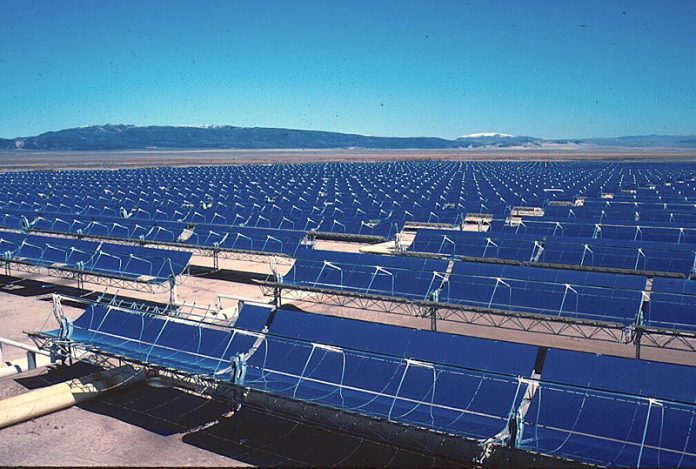Pushed by Biden administration policies and higher fossil fuel prices, the price for wind and solar power in major global markets has also risen dramatically.
Contract prices for renewables jumped 28.5 percent in North America and 27.5 percent in Europe during the last 12 months, according to a quarterly index by LevelTen Energy.
The war in Ukraine has only exacerbated what had already become a chaotic situation, with deliveries impaired by supply chain logjams and prices rising as a result of demand exceeding supply.
Renewable Development Complications
LevelTen reports a number of factors have resulted in the costs of renewable power development and renewable power contracts to increase for the first time in a decade.
Higher fossil fuel prices are leading to spikes in demand, even as supply chain issues, a lack of available power purchase agreements, and higher prices for the material inputs necessary for wind and solar projects are making new renewable development more expensive and timetables for construction and costs less predictable.
North American renewable energy developers are struggling to build solar and wind projects fast enough to keep up with demand, driven by state and federal policies and higher fossil fuel prices.
This has led to a shortage of power purchase agreements being offered to corporations and other large energy buyers. Wind and solar projects typically rely on PPAs, long-term contracts to buy specific amounts of renewable power at a set price, with large-scale energy buyers in order to secure the financing required for construction.
These PPAs are critical to bringing new clean energy projects online. However, developers are offering fewer PPAs because they are unable to anticipate materials costs and development costs, and commit to specific timelines for construction. The price of PPAs rose more than 9.7 percent in the first quarter of 2022, based solely on the increases in the prices of metals and other structural materials. And this was before the Ukraine war disrupted supply chains further.
According to LevelTen just 40 percent of developers surveyed indicated they found new suppliers who can deliver components more reliably than their existing suppliers, even as 28 percent of wind and solar developers were unable to satisfactorily sustain supply chains leading to work stoppages.
Government Complications
Regional and federal regulatory activities have also generated uncertainty for renewable energy project developers in places where PPAs are in high demand.
For example, changes to Texas regulations governing the Electric Reliability Council of Texas (ERCOT) capped the maximum price power producers can earn.
In the last quarter, ERCOT’s solar PPA prices jumped by 13.3 percent to $32 per megawatt-hour (MWh), while wind prices remained flat at $26.70/MWh.
Due to a demand driven backlog in renewable energy construction in the PJM Regional Transmission Organization, which serves and the wholesale power marketer for 13 northeastern states, PPA prices for wind power development rose by 15.6 percent and solar PPAs increased two percent.
The Commerce Department’s announcement that it was considering potential new tariffs on solar cells from four Asian nations, which supply 80 percent of solar cells installed in the United States, has added yet another bottleneck to domestic renewables development, according to LevelTen.
Rapidly Rising Prices
The recent rise in the cost of renewable energy is just the tip of a huge iceberg, says Paul Driessen, a senior policy advisor with the Committee For A Constructive Tomorrow, which co-publishes Environment & Climate News.
“Rising demand will chase steadily dwindling supplies, and the prices for iron, aluminum, nickel, copper, cobalt, lithium, graphite, rare-earth elements, and concrete will continue to skyrocket,” Driessen said. “That will also send electricity prices into the $80/MWh to $100/MWh range, destroying industries and economies.
“The ruling elites insist on imposing these massive projects on rural and coastal communities far away from their own backyards,” Driessen said. “You think the development landscape is extremely difficult now just wait until people start seeing the massive, ugly, habitat- and scenery-destroying, human-health-impairing projects urban ruling elites plan to put in the backyards of rural communities, especially in ‘flyover country’—pushed too far, people will revolt, and not just at the ballot box.”
‘Fast Buck Artists’
The green energy push is really not about clean air but about windfall profits, says Dan Kish, senior vice president for policy at the American Energy Alliance.
“Money talks, and as Warren Buffett famously said, ‘the only reason to build wind farms are for the tax credits,’” said Kish. “Truth is, these forms of energy take tremendous mineral and energy inputs and costs are rising rapidly with all the ‘Green Mania’ being pushed by politicians on behalf of Wall Street and Silicon Valley money grubbers and fast buck artists.
“They want to build them fast before people really start seeing the price hikes they will bring,” said Kish.
Biden’s green energy push is good for China’s rulers but bad for average Americans, says Kish.
“China still controls the supply chains and the Biden Administration barks and rolls over every time some green group opposes a mine or processing facility in the United States,” said Kish. “Reality is beginning to set in with the green energy industry which has been milking the climate change movement for all it’s worth, although, the bills are beginning to come due.
“People say they like solar and wind until they see farm fields covered with Chinese solar panels and wind turbines turned into Condor Cuisinarts and Eagle Executioners,” said Kish. “When it comes to renewable energy, familiarity breeds contempt, despite what people say when polled.”
Duggan Flanakin (dflanakin@gmail.com) writes from San Marcos, Texas.



























[…] post Renewable Energy Prices Are Rising appeared first on Heartland Daily […]
[…] post Renewable Energy Prices Are Rising appeared first on Heartland Daily […]